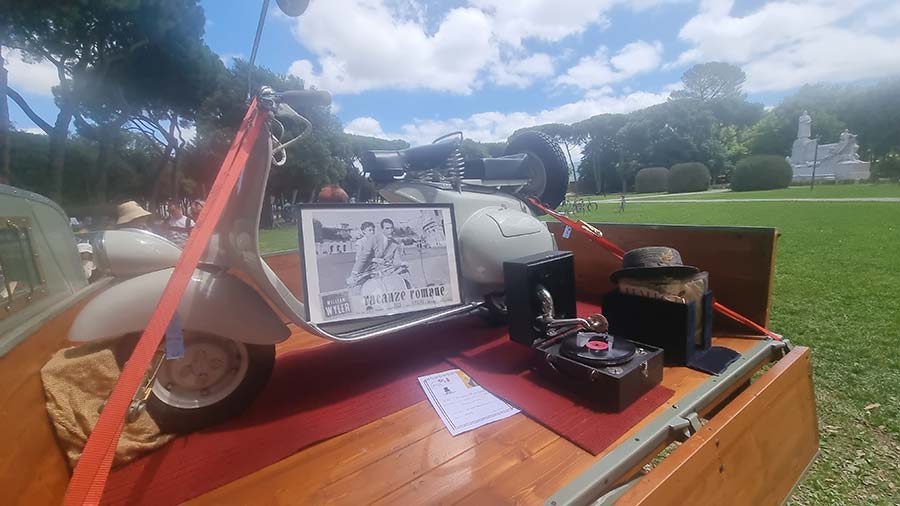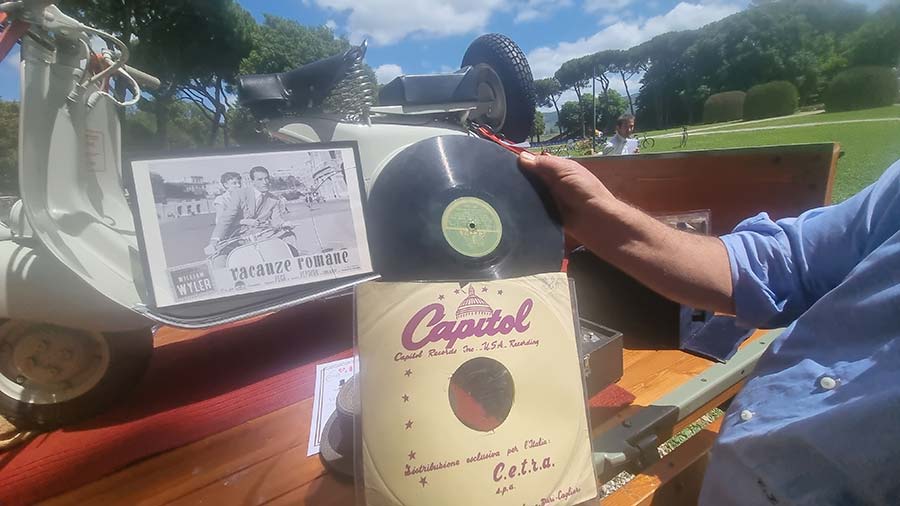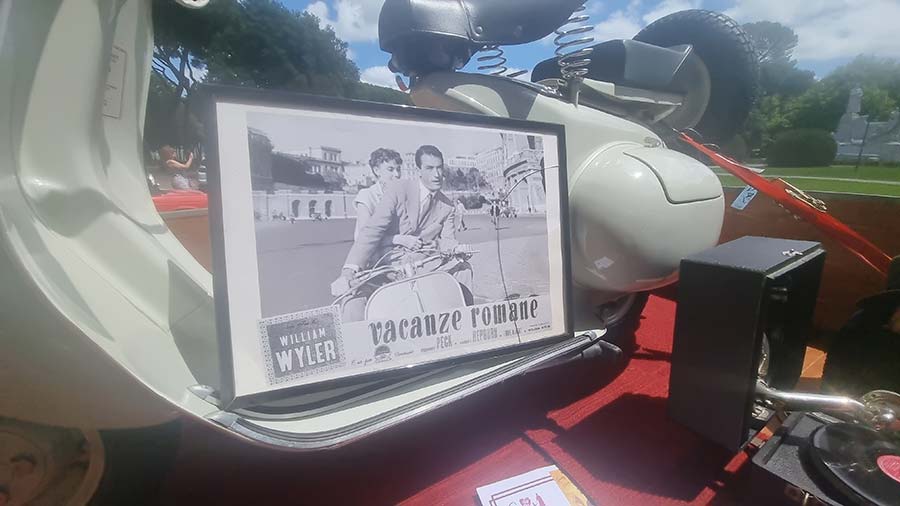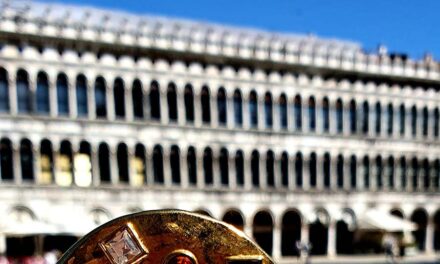I am back in Arezzo, Tuscany, and as always, the first weekend of the month promises the excitement of a vintage and antique market. You can read more about that at vintagestyleclothing.com. Today, I’m here to talk about something that’s close to my heart: the history of the Vespa, its cinematic connection with Audrey Hepburn and Gregory Peck, and how this iconic scooter redefined an era.
Picture this: It’s the aftermath of World War II, and Italy is in shambles. The economy needed a boost, and so did the morale of the people. Enter the Vespa, an idea that transformed the transportation landscape forever. Vespa, designed by Piaggio, wasn’t just a scooter; it was a symbol of freedom, a stylish escape from the war-torn streets of Italy.

Roman Holiday
I first fell in love with the Vespa through the magical world of cinema. Growing up, I watched “Roman Holiday” countless times, enamored by Audrey Hepburn’s charm and Gregory Peck’s suave demeanor. The film did more than entertain; it gave the Vespa a starring role. When Hepburn and Peck zoomed through the cobbled streets of Rome, they weren’t just riding a scooter; they were riding into the hearts of millions.
Audrey Hepburn, with her elegance and grace, became synonymous with the Vespa. Her delicate yet spirited character in “Roman Holiday” perfectly matched the Vespa’s image. She made riding a scooter look effortlessly chic. Gregory Peck, with his classic Hollywood charm, added the perfect masculine balance. Together, they made the Vespa an object of desire.
The scenes in “Roman Holiday” are unforgettable. There’s Audrey, perched on the Vespa, her pixie cut framed by the breeze, her laughter echoing through the streets of Rome. Gregory sits behind her, embodying the perfect mix of protector and co-adventurer. They don’t just ride; they create a symphony of romance and freedom.

Piaggio
Vespa’s history didn’t start with Hollywood, though. Piaggio, a company that originally manufactured aircraft, needed to pivot after the war. Enrico Piaggio saw an opportunity in the need for affordable and stylish transportation. Thus, the Vespa was born in 1946, its name meaning “wasp” in Italian due to its unique design. This little “wasp” buzzed into the market and changed everything.
Italy’s roads, once dominated by clunky and expensive cars, now had a new star. The Vespa was compact, affordable, and incredibly stylish. It wasn’t just a mode of transportation; it was a statement. People from all walks of life could now zip around town with ease, embodying a newfound sense of freedom and mobility.
The Vespa wasn’t just popular in Italy. Its appeal spread across Europe and eventually, the world. The scooter symbolized a new era of economic recovery and youthful exuberance. It became an icon of the 1950s and 1960s, featured in numerous films and ridden by celebrities, further cementing its legendary status.
For me, riding a Vespa isn’t just about getting from point A to point B. It’s an experience, a nod to a glamorous past while embracing the present. When I’m on my Vespa, I feel like I’m part of that timeless movie, with a dash of modern flair. The wind in my hair, the hum of the engine, and the knowing smiles from fellow Vespa enthusiasts make every ride an adventure.

Woman After The War
Vespa’s design has evolved over the years, but its core essence remains unchanged. Today’s models boast advanced technology and improved performance, yet they still retain that vintage charm. They come in various colors and styles, each catering to different tastes and preferences. Whether you prefer the classic look or a more modern design, there’s a Vespa for you.
Owning a Vespa is more than just having a scooter; it’s about embracing a lifestyle. It’s about appreciating the finer things in life, enjoying the journey as much as the destination. It’s about living with a sense of elegance and fun, just like Audrey Hepburn did. Every time I ride, I feel a connection to that glamorous past, to the opulent lifestyle that I adore.
Vespa has also become a symbol of sustainability in today’s world.
As cities become more congested and the need for eco-friendly transportation grows, the Vespa offers a stylish solution. Electric models provide the same iconic look and feel while being kind to the environment. It’s a beautiful blend of tradition and innovation, perfect for those of us who care about our planet without compromising on style. I have seen amazing ones in Vietnam too.
In conclusion, the Vespa is more than just a scooter. It’s a cultural icon, a symbol of freedom and style, and a beloved part of my opulent lifestyle. From its humble beginnings post-World War II to its starring role in “Roman Holiday” and its modern-day appeal, the Vespa continues to enchant and inspire.
So, here’s to the Vespa, the little wasp that could – and did – change the world.
Next time you see a Vespa zipping by, take a moment to appreciate its history, its style, and the joy it brings to those who ride it. And if you haven’t yet, give it a try. Embrace the wind in your hair, the thrill of the ride, and the undeniable charm of the Vespa. You might just fall in love, just like I did.




